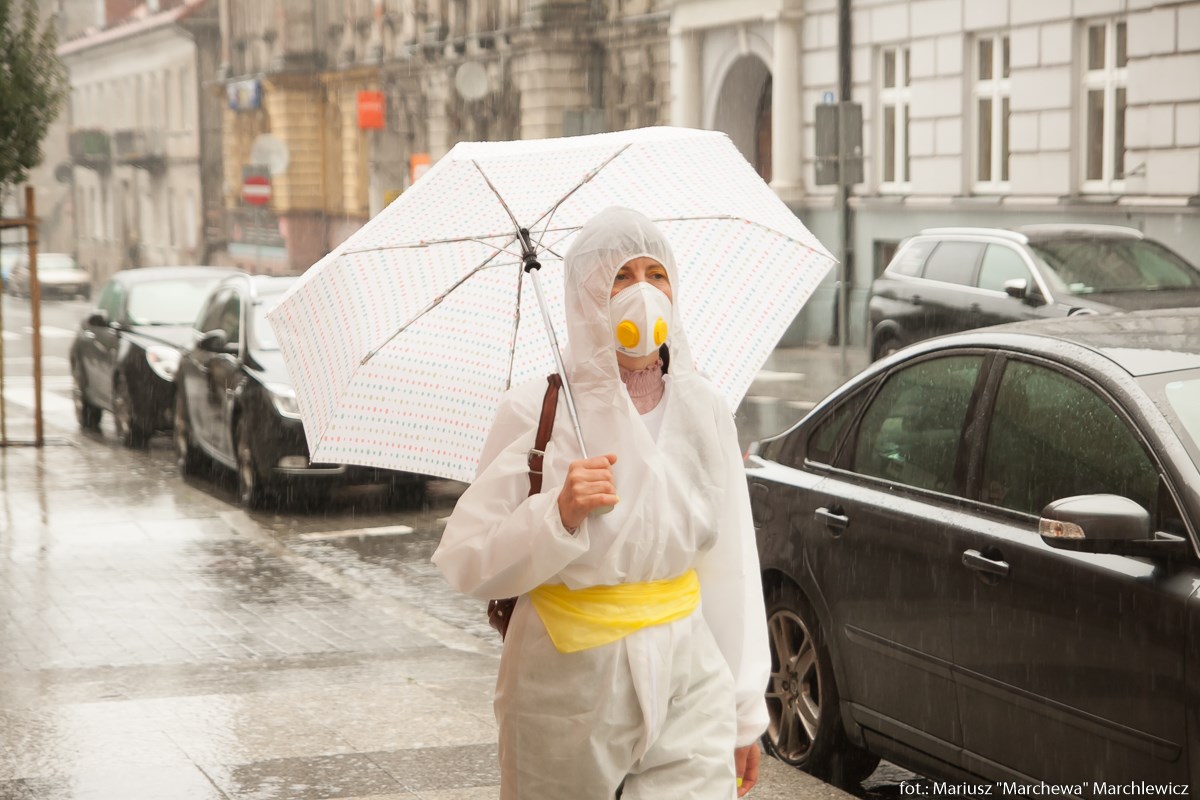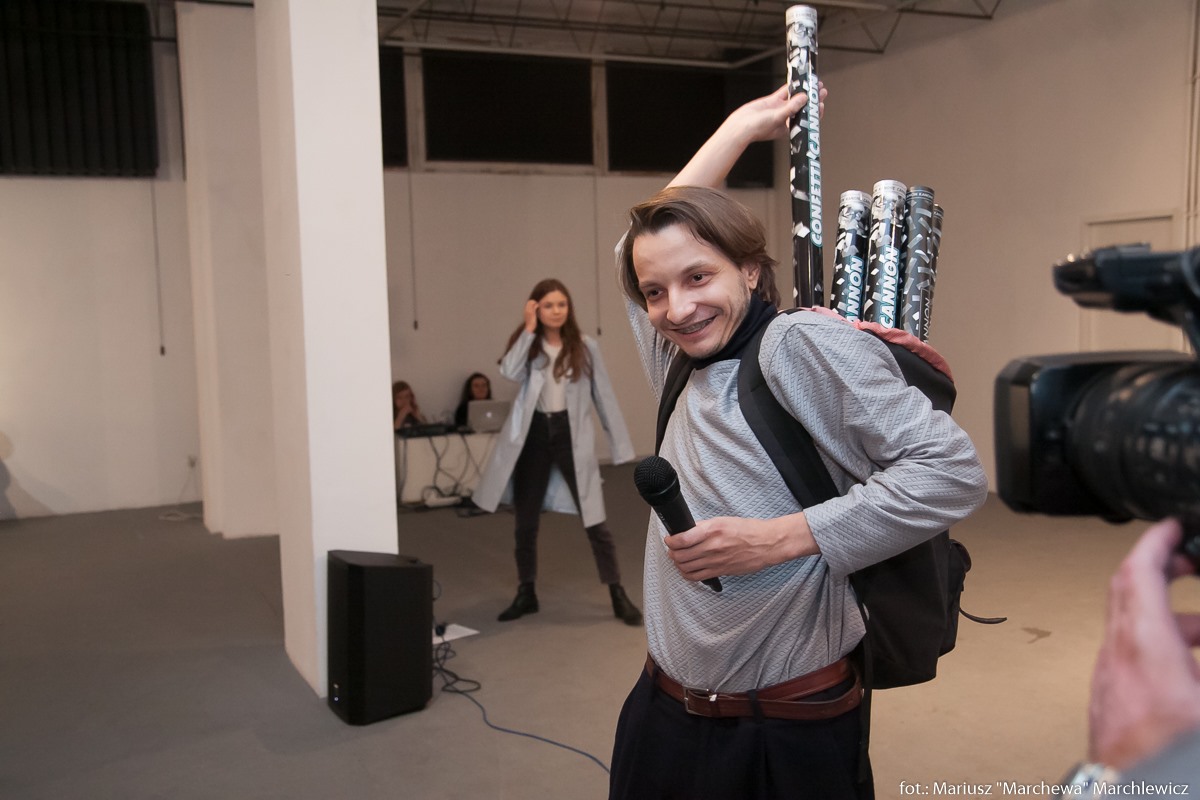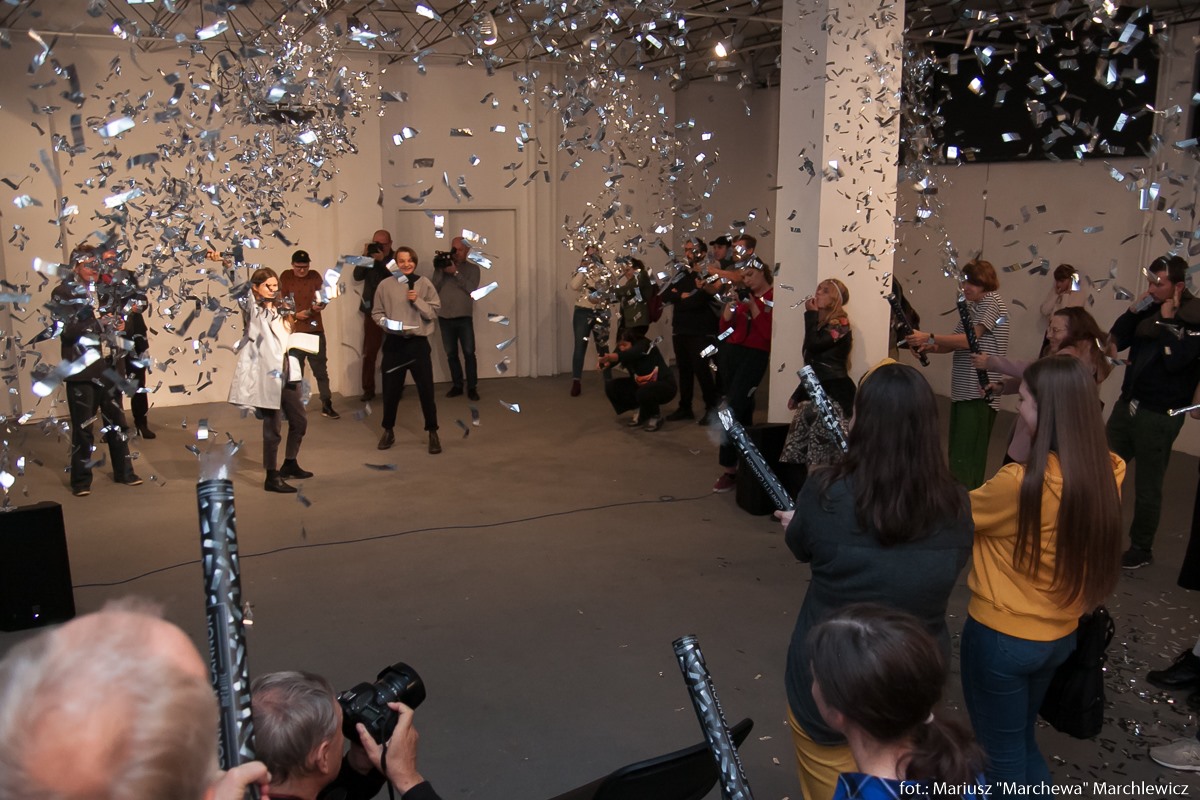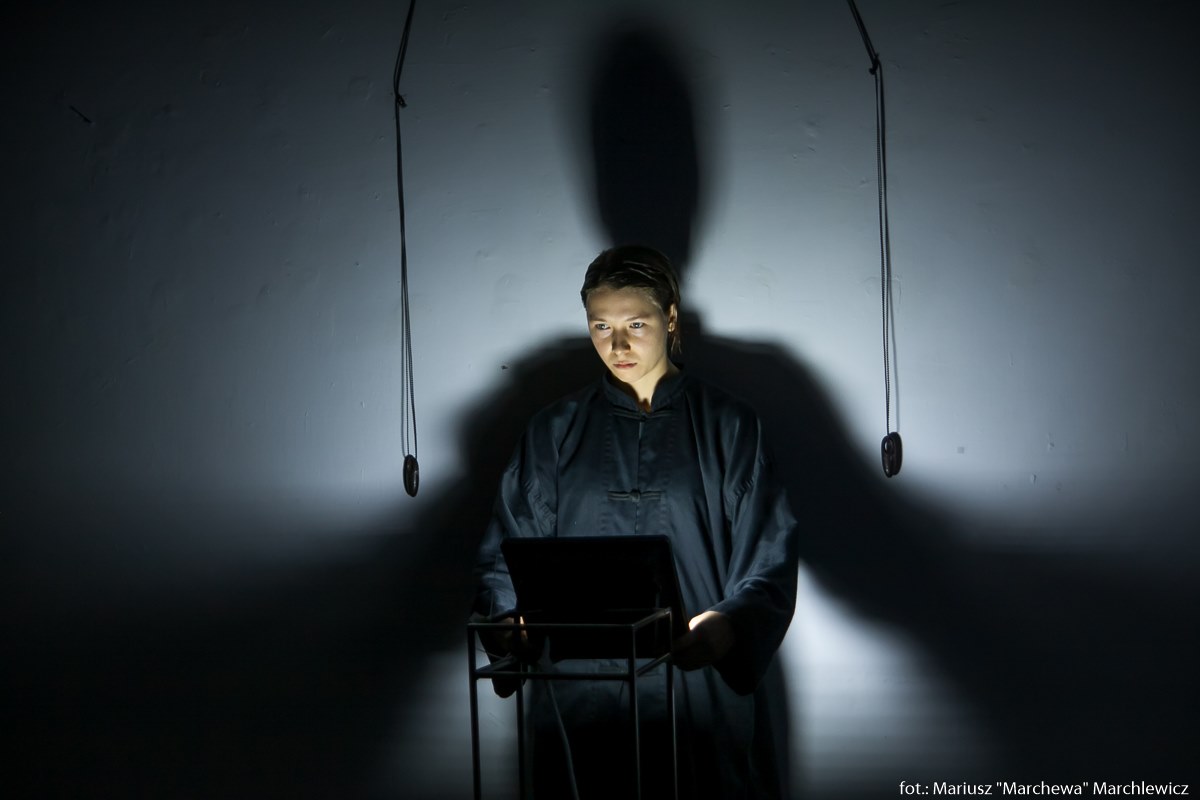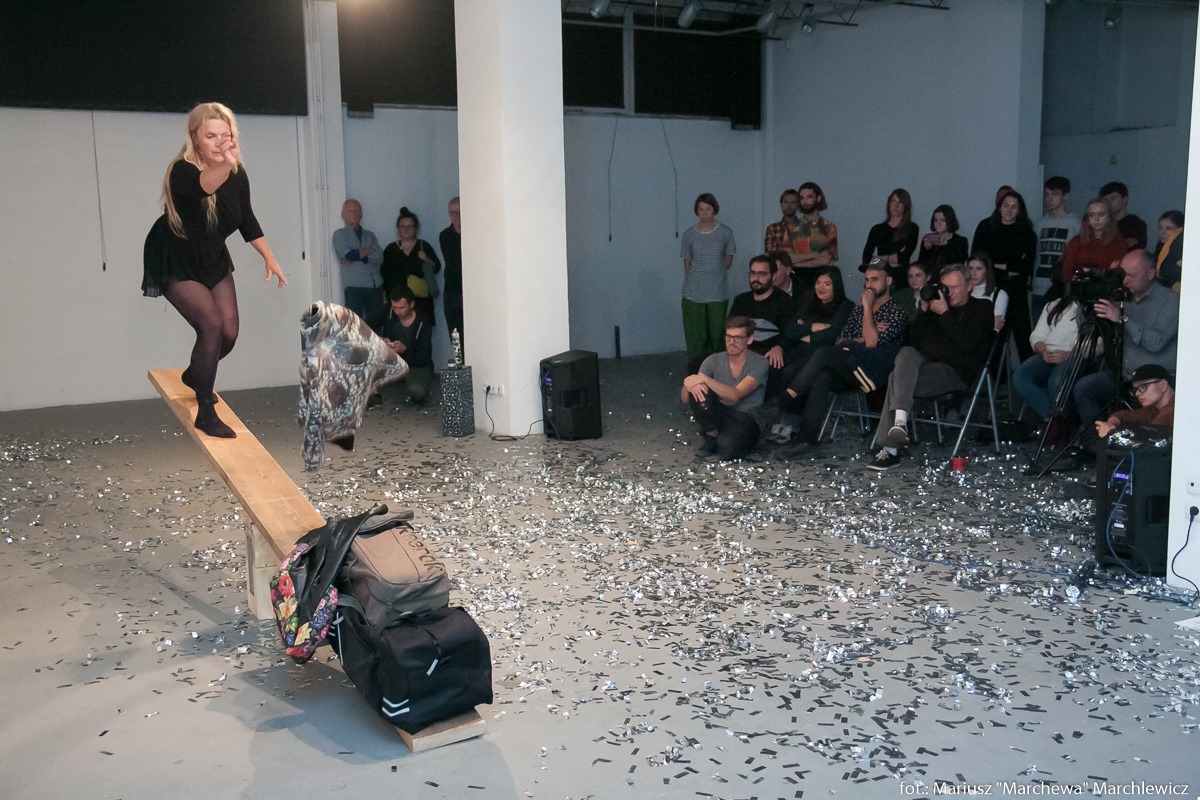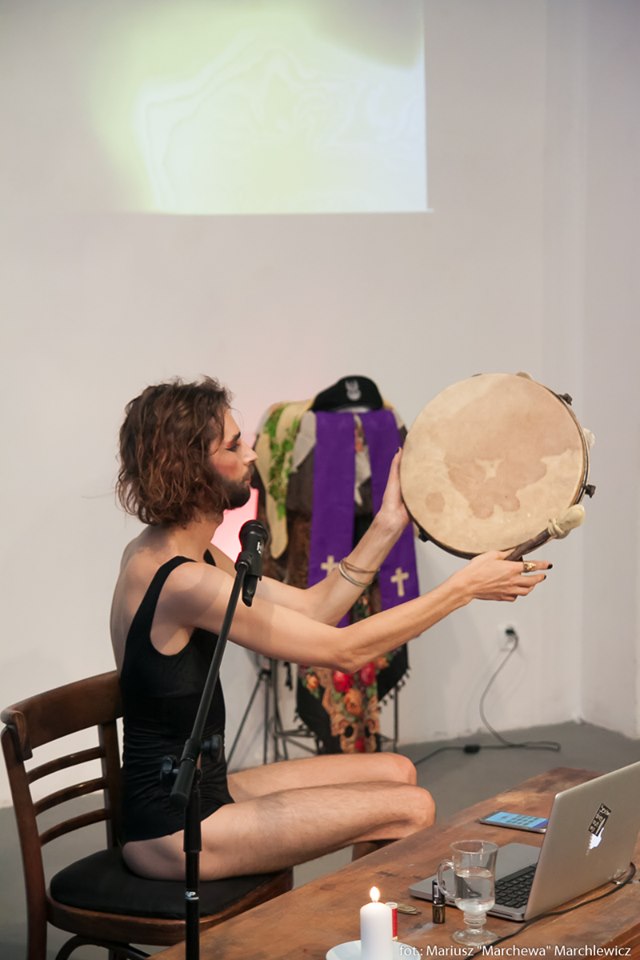26.09
The author of relation is Marta Ryczkowska.
The third day of „Interaction” revealed further fields of dialogue. This time the relation between the past and present generation, rising and setting, and different approaches to the issue of time were strongly heard. The young generation feels the impending end and the specter of an impending disaster, while the old ones claim immortality. Linearity and a sense of time turns out to be surprisingly relative. This wave also showed the master-student relationship and a number of conventions that stem from it: the need for independence, overthrowing authorities and the need to have them. The next field of dialogue is a female thread that is in the process of becoming. It is femininity in the process of going beyond the patriarchal framework, constructable, unstable, seeking its place beyond the male idiom.
Mariola Albinowska works in public space based on relationships with people. Her actions during the Interaction were dedicated to the city and its inhabitants. The artist wandered along a previously chosen trail in a protective suit. She looked like she was roaming the world after an ecological disaster. The yellow elements of the outfit were a warning element. In a florist, she bought flowers that she distributed to people she met accidentally. She aroused interest mixed with fear, as if she was taking on a character from the future, a prophet who knows what fate awaits Earth with such careless use of its resources. During the walk around the city – which turned into a specific wife for the duration of its operation – strange and surprising things happened. The artist introduced dissonance, staggered the structure, and infected the urban ecosystem. Her action, positive and contact-oriented, bitterly implied that ecological destruction is imperceptible, it is happening here and now but in the everyday life of a small city, the problem of global warming and dying species is still abstract.
Przemysław Kwiek organized a special committee. It was made up of newspaper-covered tables, collage boards behind them, an information board, books and garbage scattered around. The artist’s name, numbers and words were on the board. The artist invited his fellow artists, with an average age of 70 plus, and proclaimed the founding of the Polish Academy of High Arts. Everything was done in a sublime, pathetic tone. Members of the newly appointed university had a mesh over their mouths symbolizing censorship. Lenka Klodova, a Czech artist, also had her, but she sat among the audience. This type of activity, establishing a collective in the face of political and social changes, brought associations with other such initiatives as the Association of Artists of Other Arts. Kwiek gave an ardent speech on the need to formalize the group in the face of the fascist and totalizing tendencies of the Polish government. The situation itself was very pathetic – which reflects the broader tendency that pathos gives birth to pathos, while the answer to totalitarianism is another type of total experience. Questions arose from the audience: „Why are there no women in this Academy?” Kwiek answered provocatively pointing to his colleagues: „How is this? Each of them has a wife. „Voice from the audience:” And thanks to these women you can be artists! „Kwiek’s action caused a slight consternation and discussion that moved into the lobby. It provoked several reflections. On the one hand, we are dealing with a generation of artists whose youth fell in the 1970s and whose development could not be smooth because of the oppressive communist system. The boys of the PRL in Poland also remained in the niche after the transformation. The younger generation took over the baton. At the moment, their voice is also blocked by the authority that only proclaims the right worldview, and this type of oppressive ideology is otherwise well known to them. Therefore, the youth and old age of Kwiek’s peers coincided with the regime. It is hardly surprising that they need to rebel and remind the art world of their existence. The other side of this action is, however, that the perspective they adopt is similarly totalizing as the system it is against. The position of women in the men’s world of art, still very patriarchal, is puzzling – the scream of young performers is not able to move this monolith. What is the high art they talk about? What is the criterion for being a member of the Academy? The committee’s action resounds with frustration and fatigue by constantly proving to the decision-makers the quality of the art it creates, but also anger, desperation and incredible energy that is generated when there is nothing left to lose. Kwiek talks about the role of the elders in each generation, the wise men of the clan: „This is the moment to establish the Academy of Immortality. But do not worry. It will take barely a few years .. ”
The duo Nadia Markiewicz and Grzegorz Demczuk have invited viewers to celebrate the end. It was held to the sound of newspaper headlines heralding the end of the world – but the word world was erased from them. The viewers received tubes with blast confetti, and were given instructions on how and when to use them. 10 minutes left to the end. Everyone excited waited for the end, counting the last ten seconds together. In the final moment, the room was filled with swirling confetti. Silver dust fell slowly to the gallery floor, accompanied by delight and smiles. The spectators tossed silver particles and danced among them. Miłosz’s phrase „There will be no other end of the world” is recalled and at the same time it is puzzling that the young generation of artists lives in the shadow of the end, and the older feeling it almost tangibly has a grudge against immortality. The paradox of understanding the two generations of time that are at the polar stages of life is striking.
Lenka Klodova made a performance based on balance. She stepped onto the balance bar with luggage – a suitcase, a bag and a handbag that matched her body weight. She walked slowly to the other side of the wooden beam and put everything at her end in her hands. She returned to the other side and began to slowly, methodically remove subsequent pieces of her wardrobe and throw them one after another on the luggage opposite. It gradually loaded the other side of the balance bar. When she got rid of all the clothes, she began to balance subtly. She moved in a subtle way, reminiscent of meditation or breathing exercises. Things on the other side were still in place. At some point, it accelerated and began to fall. The artist’s movement became dynamic and wild. The performance ended when all the items were on the floor. It was a classic action with matter, using the possibilities and strength of one’s body. In this sense, the artist referred to the tradition of performance art. Nudity has shown the body in an affirmative way. The artist has been running the Festival of Naked Forms in Prague for years, in which the naked body of the performance artist becomes the starting point for non-physical considerations. Here the body appeared as a place of concentration of various gravitational forces. Klodova raised the problem of balance in performance – in life and in imposed roles, dependence and separation from objects, the ability to control reality instead of succumbing to its influence.
Anna Rutkowska based her action on methods of working with the body and mind straight from the Eastern academy and medicine, using both new media and ancient self-healing practices. Her performance was a mix of a coaching session, a lecture given by a recognized professor of a respectable university, therapy and a spiritual session. The artist spoke about the knowledge passed ex cathedra by authorities from various sides. The synonym for the distribution of this wisdom was Tadeusz Kantor’s index finger as a way of conducting the world (currently mainly students of art colleges) and the song Łebe Bebe, played in the form of a performative lecture. The second part of the activity was a mesmerizing session. It concerned the healing technique of tapping meridians, established points in the body. The artist warned that the tapping can be both therapeutic and traumatizing, after which she started looking at the dazzling reflector. On the opposite wall she presented a recording with contrasting colors, on which she does the same. Simple gestures lit with theatrical light appeared as strange auto-exorcisms. The artist showed the spectrum of influencing the other person using more or less literal techniques of influence – it is not without significance that she is a student at the Academy of Arts, so the teaching processes are close to her. It refers to the master-student relationship, which is often a field of abuse, and to the area of art as an experiment, which also creates a field of uncontrolled psychological manipulation (especially in the context of senior professors and young art students).
Vala T. Foltyn has realized an extraordinary mystery. She passed between the spectators spraying incense. There was a stuffy, church scent in the gallery, accompanied by the soothing sounds of familiar music. The master of ceremonies, dressed in fur and stylish high heels, stood back to the audience. Against the background of the wall, a black and white film was presented, as well as documentation of events organized in memory of Wala’s friend, who died last year, Aneta Żukowska. Wala started her story. She talked about an old Krakow house that is one hundred years old and is full of memories. The future pope Karol Wojtyła lived nearby, who was active in the alternative theater. Simona Kossak also came here before she went to live among the animals in the Białowieża Forest. Neighboring the erudite and intellectual Wincenty Lutosławski, who attempted to develop a Polish national philosophical system combining Platonic idealism with the messianism of Polish romanticism. He was also a pioneer of yoga in Poland. It is not surprising that the villa, which was saturated with such energies for years, served Wala as a space for creative work, a place for creative exchange, workshops and concerts, a place where life was vibrant. Currently, the house was bought by the developer and is standing dead. Wala Fołtyn’s performance is an expression of longing and a tribute that she gives to the place and people. She is a spokeswoman for queuing tradition and affirmation of the body, she perceives both spheres as closely connected. He also expresses rebellion against fascist tendencies that regulate the norms of behavior and being in the world. Vala Dalai Lama, a neighbor of John Paul II, spreads the philosophy of love but in her voice there is also bitter reflection and disappointment with the world. For this reason, he turns inward, seeking his own path to holiness outside the established canons.

